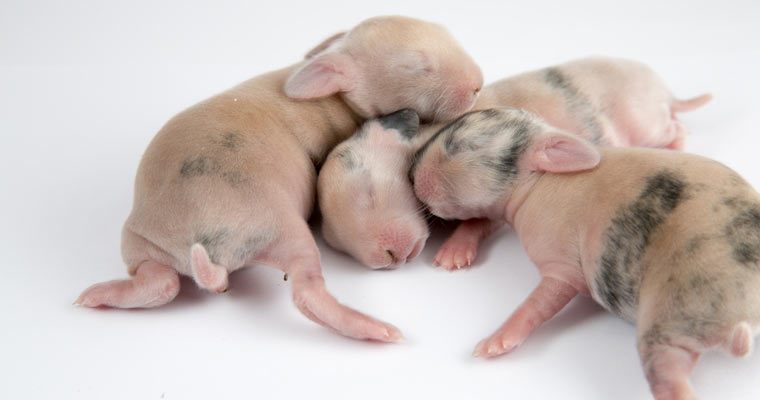When you have a new liter of kits (baby bunnies) born, your job is very important – but very simple. As soon as you see that birth has occurred, you will need to pick up each baby born. Make sure they are warm (new kits chill quickly and they will die if they get cold). Check each one for any physical injuries, missing body parts, and remove any that are not alive. Doing this takes a short amount of time, and as quickly as the initial check is done, place the bunnies back into their nests and let their mom do her job. Every day, you will need to do this quick basic exam, and in doing so, pay attention to the babies skin and stomachs. If mom is feeding them, the stomachs will look full, but not necessarily fat, and the skin on their bodies will mostly be well-filled vs. excessively wrinkled.
If it appears that they have not been fed, then check them again 12-16 hours later. If no changes have occurred, you may wish to turn mom over onto her back, securing her back feet, and hold each baby onto her belly to allow them to nurse. Feeding each one will only take a couple of minutes, as their stomachs are very tiny, so don’t worry if they don’t eat much. Do not believe that old wives’ tale about not touching the babies. Rabbits are good moms, and they will not abandon their liter just because you touched them. In fact, by the time she gives birth, she should be so accustomed to you that she pays very little attention to you even being in the nest.
You might also like: How to care for a rabbit? 10 Steps!
After the first weeks
After the babies have grown up a bit, their fur has come in and their eyes have opened, around the 3rd week, you will see the babies getting more active and hopping in and out of the nest. At this point, if you haven’t already, make sure there is clean, fresh hay for them to nibble at on a daily basis. As they grow, this will help the flora in their guts to be prepared for nibbling at moms’ pellets, and in doing so, will reduce the risk of them developing GI Stasis or other forms of “bloat”.
You might also like: How to hand feed my rabbit?










